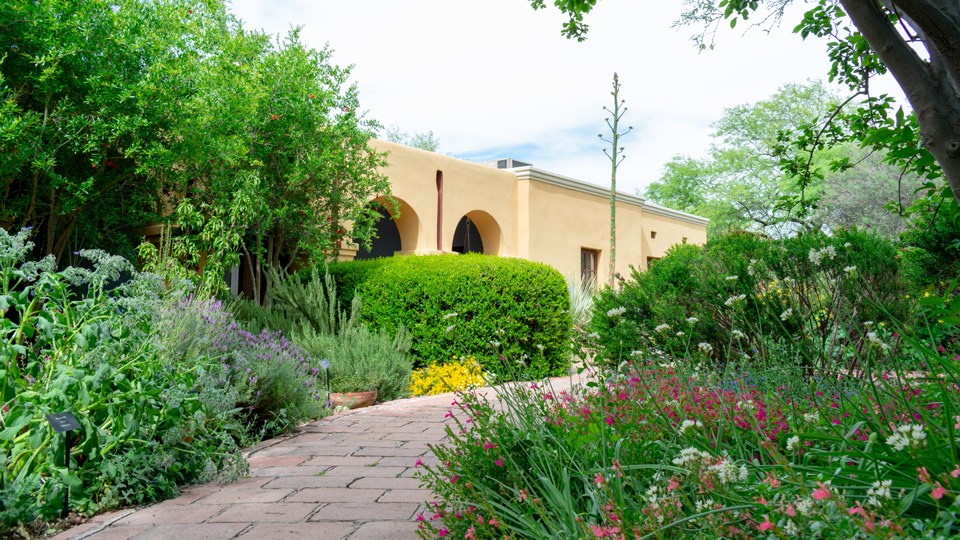
NPS Photo How It WasMissions took their garden design from Spanish tradition, which itself incorporated garden design from Arabic, Moorish, and Roman architectural tradition. Combined, a Spanish garden incorporated a walled courtyard with a central fountain, often including water channels in the four cardinal directions, that promoted shade, fragrance, and color. In the mid-1700's when the first church was constructed at Tumacácori, there was undoubtedly a garden similar to the one located at the visitor center today. These gardens featured mostly plants imported from Europe and brought to the New World by the padres. Each of these plants would have had enough value for settlers to import them from Europe, or to adopt them from the surrounding area– the value of cultural, religious, or symbolic importance, medicinal or food value, shade, or simply beauty. How It Is NowThe courtyard garden at Tumacácori was built in 1939 as part of the visitor center's New Deal era construction. Its design aesthetic, like many of the adjacent visitor center architectural details, mirrors that of the missions in New Spain.

|
Last updated: May 6, 2025

